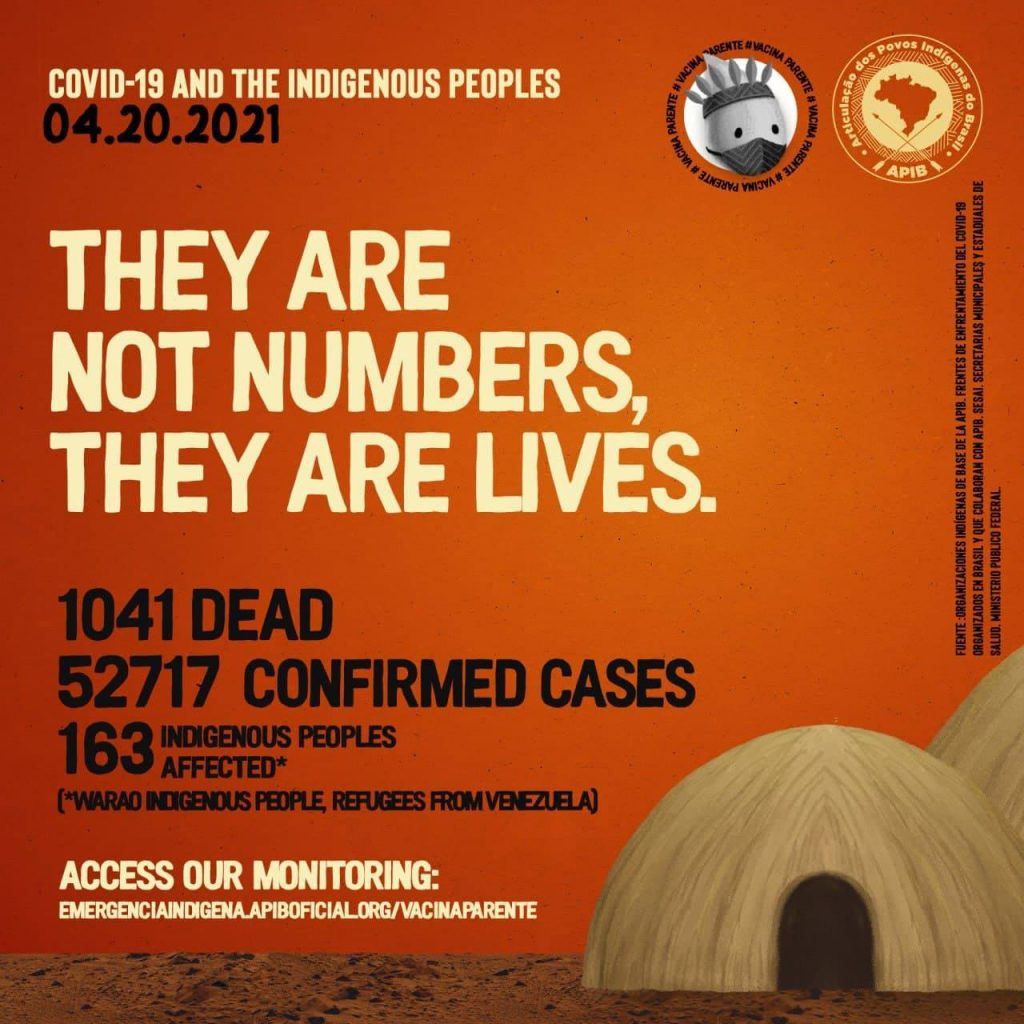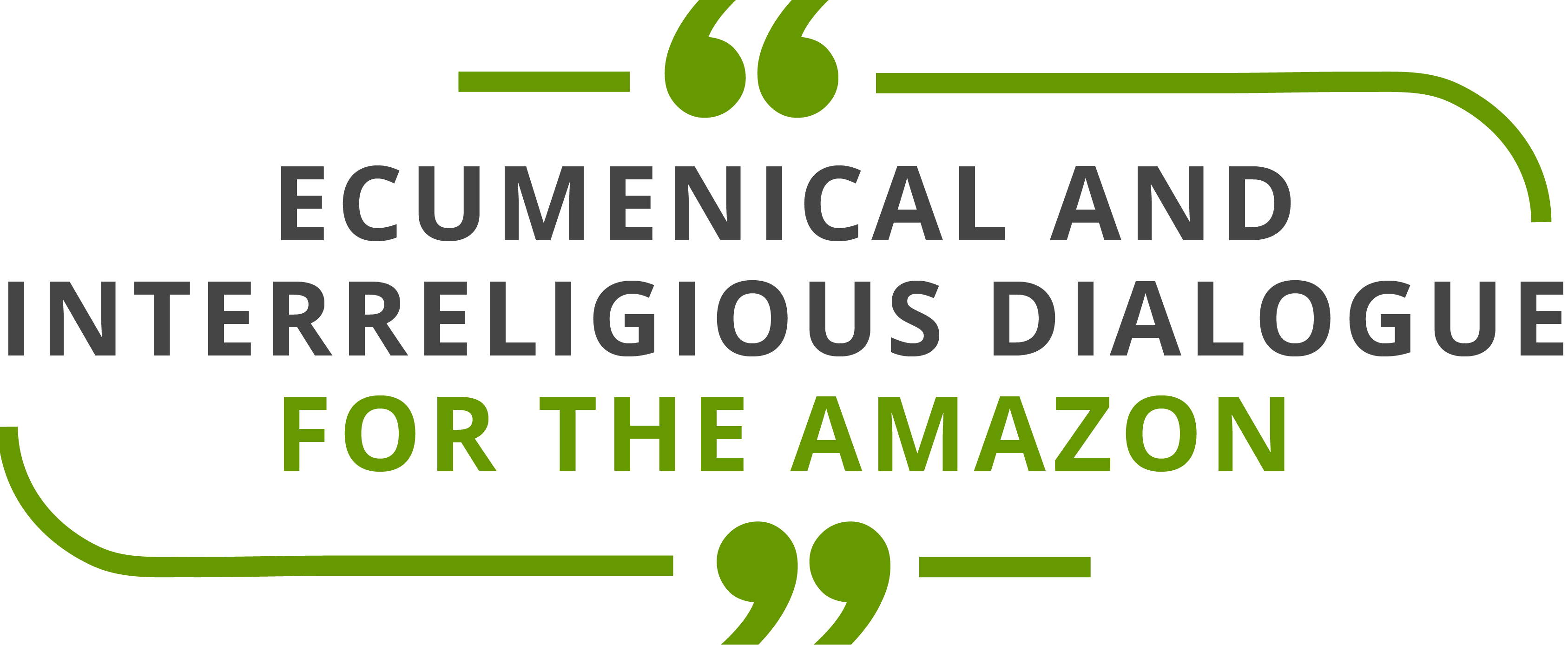
BRAZIL-
Sheila Tanaka
The pandemic of the new coronavirus raised several reflections on life in big cities, work and social relations and daily habits. The impact has been so deep that the term “new normal” ruled in newspapers and sociological analysis on the current moment. On the other hand, the pandemic exposed something not new at all in Latin America and the Caribbean: the historical inequalities and discrimination towards the most vulnerable populations.
The diverse conditions under which countries faced the pandemic deepened world inequalities even further. The most severe effects on the pandemic over mortality and economic scarcity for marginalized communities also explicit countries’ internal contradictions.
In the Amazon, the most biodiverse region in the world, the devastation caused by the virus can generate irreparable damages for life on the planet. In this article we will present data and reflections on the pandemic in the Amazon and its impacts. Although Covid-19 brutally affects urban populations, we will focus here on indigenous communities, for what they represent for the future and preservation of the region.
The objective of this discussion is to inspire faith people, churches, and ecumenical organizations to act and defend the jungle and its peoples. Ecumenical organizations have the mission to rescue hope and enchantment for the Creation, inspiring institutions, governments, and the population in general.
The spread of the pandemic over indigenous Amazon
The arrival of the new coronavirus in the Amazon quickly raised red alert among researchers, local and international organizations, and indigenous federations. This is not the first time communities face diseases brought by foreigners, and previous experiences signalized risks of disappearance for the forest’s main defenders. According to the Amazon Cooperation Treaty Organization, almost 3 million indigenous people live on Amazon territory, spread in 400 communities, 60 in total isolation[1]. They are not simple inhabitants of the forest, but rather the guardians of nature and of the ancestral knowledge on it.
Despite their role in defending the largest tropical forest of the world and “lung” of the planet, the indigenous peoples in the Amazon – as other traditional communities – do not receive appropriate acknowledgment, assistance, or protection. Instead, they face diverse dangers associated to the economic exploitation of natural resources: fires, intensive agriculture, mining and illegal land grabbing are among common threats, which have raised during the Covid-19 pandemic[2]. Between August 2019 and July 2020 there was an increase of 33% in deforestation of the region, in relation to the same period of the previous year, pointing out the advance of forest exploitation as communities’ vulnerability grow. In December 2020, the Coordination of Indigenous Organizations of the Amazon Basin (COICA) declared a climate emergency, demanding immediate action from authorities[3].
To this date over 2,5 million Covid-19 cases have been confirmed in the Pan Amazon, and 67.318 deceased[4]. The dissemination of the virus in Amazon territories was leveraged by the historical lack of assistance, information and of proper sanitation conditions and health services. In Peru, one of the most affected countries, only one out of four indigenous communities in the Amazon is provided with potable water by the public system[5]. Indigenous federations of the Loreto department denounced the unhealthy context in which communities faced the arrival of the virus: a growing contamination of water and food by oil in rivers, in addition to malaria and dengue outbreaks. The absence of public aid in this region also imposes long days-lasting trips to access any health service, raising the risks of mortality by Covid-19 when compared to other regions[6][7].
In a December 2020 report by the Articulation of Indigenous Peoples of Brazil (APIB), it is stated:
Way more than numbers, they were our shamans, our prayers, midwives, elders and chiefs who left. We lost our elderly people, the ones who keep the memories of our ancestry, guardians of knowledge, of songs, of prayers, of our spirituality. Leaders who dedicated their lives to the struggle to defend the territory, the integrity and the physical and cultural existence of their peoples. We suffer in our mourning for this tragedy that affects not only us indigenous people, but all of humanity[8].

The report also denounces the politics of genocide by the Brazilian government. The political violence and the persecution to indigenous people have grown in the pandemic period. From March 2020 to November 2020 over 200 cases of human rights violations were reported. The politics of genocide is characterized not only by omission, but also by what seems to be an extermination act: even amidst the sanitary emergency, the government spent 9% less from the budget reserved for indigenous health in the first semester of 2020, in comparison to 2019[9]. The Brazilian government also imposed veto on important parts of a July 2020 law, containing measures to stop the devastation of the virus among indigenous, quilombolas, fishermen and other traditional communities. The law has not been fully implemented to this date.
The problems caused by the absence of protocols, infrastructure and supplies have increased the death numbers beyond the Brazilian borders. The Amazonas River has been a contamination route during many epidemics throughout history, and this was no different in the coronavirus pandemic. In the Colombian Amazon, the virus arrived through the border with Brazil, opening a contamination corridor that reached communities in the region. The National Indigenous Organization of Colombia (ONIC) raised awareness to the risks of extinction to indigenous peoples in the Amazonas department, at the border with Brazil and Peru, where the indigenous population is almost 60% of the total population in the department. In the second wave of contamination, between December and January 2021, the increase of cases in Brazil led the Colombian government to close its borders with that country. Indigenous leaders alert to the risks of food insecurity for indigenous populations, since communities face supply shortages during roadblocks and there is no communication with isolated ones[10].
In Bolivia, economic activities were not paralyzed to detain the spread of the virus in extractive zones, exposing indigenous peoples from the Amazon to contamination by workers in gas and oil power plants close to indigenous territories. On the other hand, the isolation of some communities imposes difficulties to food, health, and hygiene supplies[11]. The Bolivian Amazon was the second most affected region in number of deaths, reaching over 8 thousand deceased by April 2021.
While other parts of the world discussed the pandemic as a moment to reassess predatory practices of humankind over nature, in the Amazon the impact was the opposite. Although deforestation decreased in a few countries, due to social isolation politics – as is the case of Peru – in others it has increased even more. In Brazil, where 60% of the Amazon territory lay, the clutter caused by the pandemic was an opportunity for illegal loggers and miners to advance over protected territories, with full endorsement of the national government. In February 2021 public institutions theoretically responsible for protecting the environment and the indigenous population regularized the economic exploitation of indigenous lands, evidencing intentions to exterminate the guardianship of protected areas by traditional peoples.
The consequences of authorities’ lack of responsibility with the preservation of the forest and its defenders are unmeasurable. Scientists have raised awareness to the fact that deforestation may be the cause of future pandemics in the next decades. The degradation of the original biome leads many species to seek food and shelter in other zones, leading to a dissemination of viruses and bacteria to which human beings have no immunologic defence[12]. Moreover, deforested areas are more susceptible to fires – which liberates smoke and soot in the atmosphere, aggravating respiratory diseases even more, as is the case with Covid-19[13].
[1] https://www.amazoniasocioambiental.org/pt-br/radar/pandemia-deja-a-la-amazonia-mas-fragil-que-nunca/
[2] idem
[3] https://coicamazonia.org/pueblos-indigenas-declaran-emergencia-climatica-en-la-amazonia/
[4] Dato de 12 de abril de 2021. Fuente: REPAM
[5] https://www.unicef.org/peru/historias/covid-19-amazonia-peruana-se-necesitara-mas-que-agua-y-jabon-coronavirus
[6] https://www.amazoniasocioambiental.org/pt-br/radar/latinoamerica-pueblos-indigenas-cierran-sus-territorios-frente-al-avance-del-coronavirus/
[7] https://www.brasildefato.com.br/2020/05/11/os-povos-originarios-da-america-latina-na-era-da-covid-19
http://www.aidesep.org.pe/sites/default/files/media/COMUNICADO_CCIL_FEBRERO.pdf
[8] APIB (2020). Nuestra Lucha es por la Vida. P. 5
[9] https://www.inesc.org.br/mesmo-com-pandemia-governo-gastou-menos-com-saude-indigena-em-comparacao-a-igual-periodo-de-2019/
[10] https://es.mongabay.com/2021/01/covid-19-pueblos-indigenas-temen-el-impacto-de-la-segunda-ola-de-la-pandemia/
[11] https://es.mongabay.com/2020/04/bolivia-pueblos-indigenas-coronavirus-covid-19-salud/
[12] https://brasil.mongabay.com/2020/04/desmatamento-acelerado-na-amazonia-pode-levar-a-proxima-pandemia/
[13] https://noticias.uol.com.br/colunas/leonardo-sakamoto/2020/05/10/covid-queimadas-na-amazonia-ampliam-risco-de-morte-e-de-colapso-hospitalar.htm
